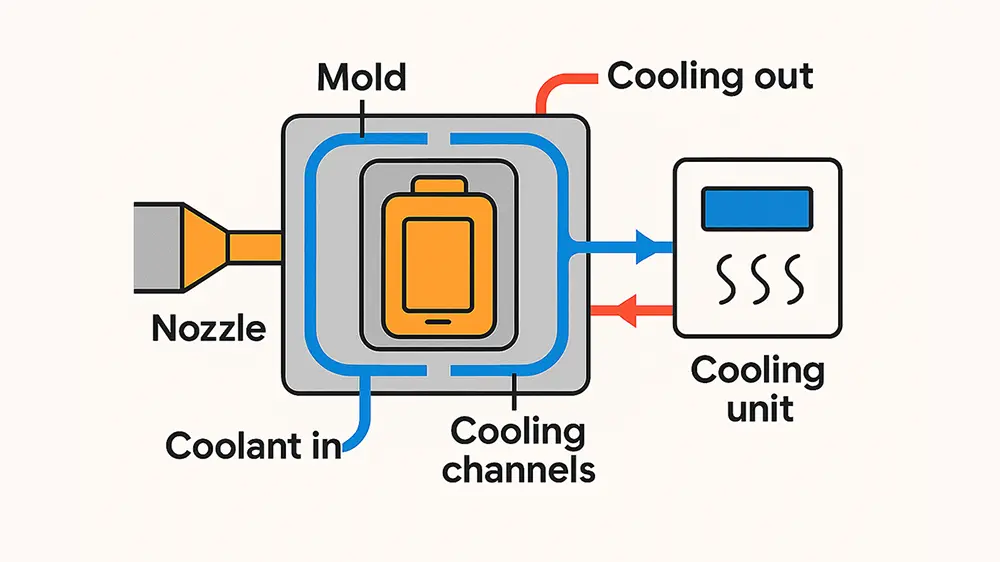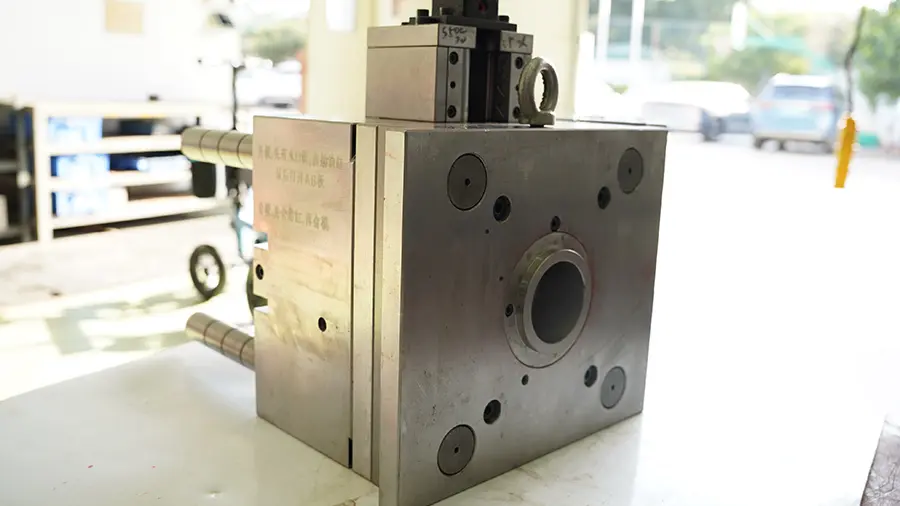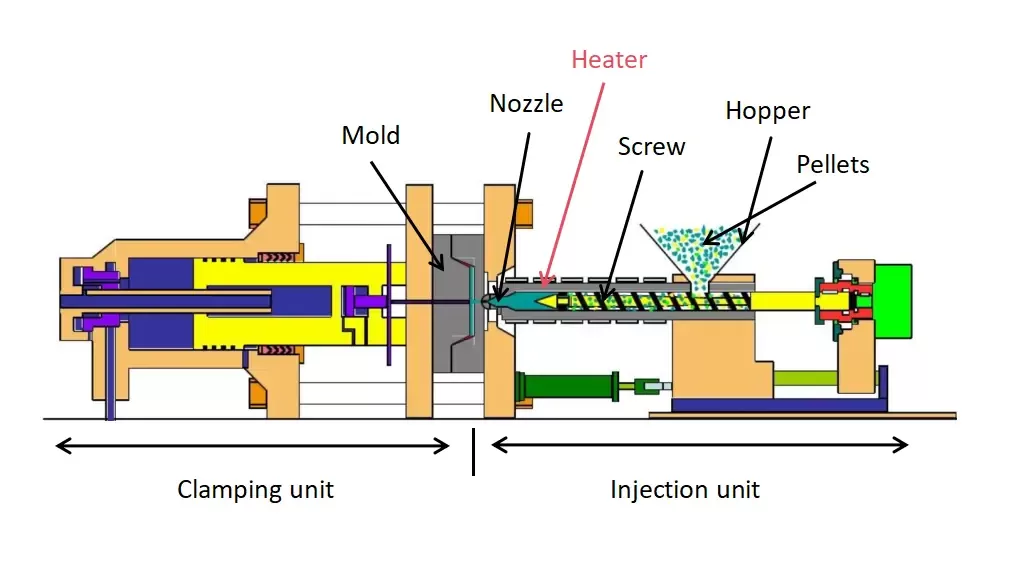There are plenty of molders out there; how does one make the right choice for a project? Following are five critical questions to ask before making that decision. Some should even be asked earlier in the design phase to ultimately save time.
1. Is my part moldable?
Injection molding is a very flexible technology, but it does have its limitations. Some designs simply cannot be molded and will require either a redesign or the use of a different production process. Other designs can be molded, but only by a sophisticated molding shop. Before redesigning an “unmoldable” part, be sure the decision is being made for the part’s benefit and not for the benefit of the molder.
Ideally, a molder should be more concerned with the needs of a customer rather than focusing on their own convenience. See if the quote received includes a free manufacturability analysis. If one molder can’t produce the designed part, see if another will. There are some features that simply can’t be molded, but many more that are too challenging for some molders. If a part truly can’t be molded, an expert molding firm will work with a customer to ensure the necessary changes are made while maintaining the original design concept.
2. Can the molder handle the “tricky stuff”?
One of the benefits of injection molding is the ability to mix materials with inserts and overmolding, while working around process limitations with capabilities, such as side actions. All of those capabilities require special skills, equipment, and processes that not all molders have. In some cases, molders will simply no-bid a submission; in others, they will accept the job but be performing at the very limits of their capabilities.
With a complex part design, ensure a molder can demonstrate experience in that specific area, whether tight tolerances, internal or external threads, undercuts, inserts, or overmolding. An experienced molder will work with a customer to turn a vision into the best possible part, ideally without adding too much delay to the process.
3. Can the molder meet the customer’s deadlines?
Today’s medtech market moves faster than ever before, and competition is worldwide. The industry isn’t kind to runners up, and today’s innovative idea can easily become tomorrow’s commodity. Getting to market first can have a huge impact on ROI. No one should cut corners, but when a molder says a quote could take weeks and that parts will take six to 18 weeks, many projects can’t afford that amount of delay. Seek a molder willing to meet already established deadlines.
With today’s modern tools, a quote should be ready within hours and finished parts in a week or two, regardless of the part design complexity. Medical device manufacturers need to get a new product to customers and maximize margins as a first mover in the market. And remember: slower isn’t better, it’s just slower.
4. Who is making the mold and molding the parts?
Getting it right the first time without delay doesn’t just happen; it takes expertise and experience. In the molding industry, there are numerous methods for cutting corners—shipping work overseas or parceling out work through brokers. That approach transforms a design into a commodity with the accompanying assumption that “parts are parts.” The problem is that just a few substandard part failures can ruin a company’s reputation. Further, a minor delay in getting to market can put a new device introduction onto life support. If a customer has questions, should they be required to address them with someone 12 time zones away or through a third party? Can a medical device manufacturer afford to put a project on hold while parts are in transit from an unknown location?
Consider the benefits of a domestic molder. Look for a molding partner that will be available to handle calls at a reasonable time, or even schedule a visit with. Know who is working on the molded parts and where to reach them. Consider the benefit of knowing where the part molds are throughout the entire life of the product.
5. What is the right price?
There’s no right price for the wrong product. Saving money is always appealing, but not if it increases risk. Ensure the specified product is provided in the timeframe required. Know how questions will be handled and who is seeing the job through to completion. Once those assurances are in place, the best price for the right product can be sought. Also, ensure the price quoted is the real price. Watch for hidden fees such as those tied to shipping, expediting, or remaking molds.
The right molder may not be the cheapest option, but rather one that will quote the best possible price for ensuring the parts are fabricated correctly and within the right timeframe. Beware of lowball quotes and hidden fees. Further, consider cutting out the middle man—a broker who farms a parts order out and removes the medical device manufacturer from the selection process, possibly inflating costs. Also, if a large number of parts are required, keep in mind that molds do wear out over time. Ensure there won’t be charged for repair or rebuild.
The Bottom Line
Choose a molder who can produce parts the way they were designed. Expect timely quotes and rapid turnaround of parts orders. Deal with experienced molders who can demonstrate that they understand the specific needs of a medical device part while also making themselves available throughout the process. Then seek the best price, while remaining confident it will be for the right parts, on schedule, from a trusted supply partner.
To be a leading manufacturer for plastic injection mold and injection molding. RJC supports medical product manufacturing with molding processes all the way. and this enables us to serve and defend covid-19 in 2020 by supplying medical device components by rapid manufacturing what you need. ISO13485 and FDA are the ready licenses for us to help bring medical product design and development from DFM through machining to mass production, such as ventilator components, intubation device components, and disposable testing products and tubes produced in the cleanroom as expected. what RJC can support is as follows :
- In-house production molds (Plastic & Die-casting)
- Injection molding
- Exported molds (deliver molds to overseas for molding locally)
- Rapid prototype ( 3D printing, machining & Vacuum Casting)
- Precision CNC machining ( Milling & Turning)
- Silicone components (LSR & Compression)
- Sheet Metal
- Post-processing ( painting, plating, printing, anodizing, chroming, etc…)





